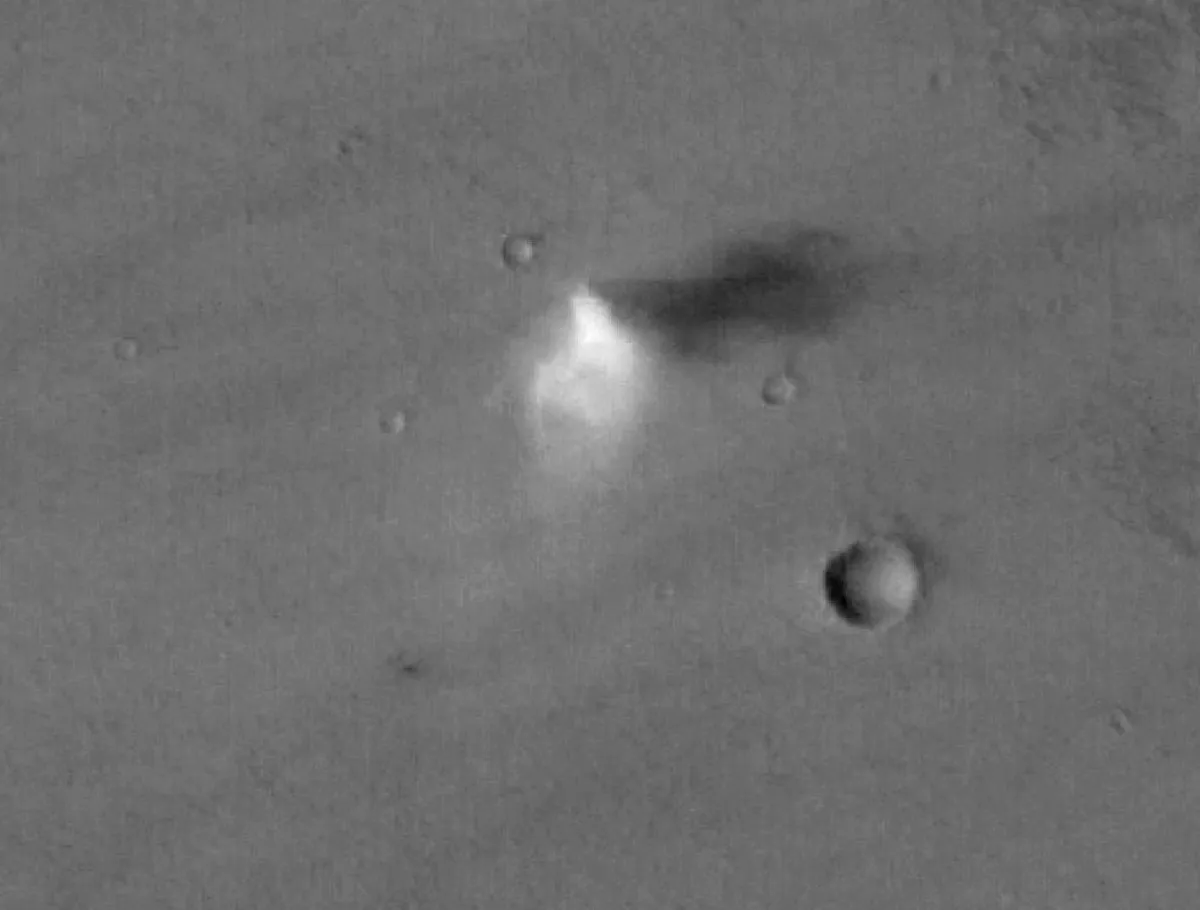
In a remarkable study published today in Science Advances, scientists have meticulously examined two decades of imagery from the European Space Agency’s Mars Express and ExoMars Trace Gas Orbiter spacecraft. This extensive research has led to the identification of 1,039 tornado-like whirlwinds, known as dust devils, providing critical insights into how dust is lifted into the Martian atmosphere and circulated across its surface. The findings reveal that the strongest winds on Mars can blow significantly faster than previously believed, enhancing our understanding of the Red Planet’s weather and climate.
This comprehensive catalogue represents the first time researchers have tracked the motion of such a high number of dust devils, enabling them to better understand their movement across Mars’s surface. Led by Valentin Bickel from the University of Bern in Switzerland, the study marks a significant advancement in planetary science. “Dust devils make the normally invisible wind visible,” explains Bickel. “By measuring their speed and direction of travel, we have begun mapping the wind patterns all over Mars’s surface. This was previously impossible due to a lack of comprehensive data.”
While Mars is renowned for its dramatic landscapes, including towering volcanoes and vast craters, the study emphasizes the significance of dust. Dust plays a vital role in regulating temperatures on Mars, acting as a shield to keep daytime heat at bay and as a blanket to retain warmth at night. Additionally, dust particles can serve as nuclei for cloud formation, and dust storms have the potential to force water vapor into space. Unlike Earth, where rain clears dust from the air, Martian dust can linger in the atmosphere for extended periods, necessitating a deeper understanding of its dynamics for climate modeling.
To gather this new data, researchers employed a neural network to identify dust devils within images captured by Mars Express since 2004 and ExoMars TGO since 2016. The resulting map illustrates the locations of all 1,039 dust devils and the direction of motion for 373 of them. The study highlights that although dust devils are distributed across Mars, certain regions, such as Amazonis Planitia, are hotspots for these whirlwinds, where fine layers of dust and sand are prevalent.
The research uncovered wind speeds reaching up to 44 m/s (approximately 158 km/h), surpassing previous measurements obtained by rovers on the Martian surface. However, it’s essential to note that due to Mars' thin atmosphere, a human would hardly perceive winds at 100 km/h. The study revealed that in many locations, dust devils were propelled across the landscape at speeds greater than current Mars weather models had predicted, indicating that more dust may be lifted from the surface than previously understood.
Like Earth, Mars experiences seasonal changes, with dust devils being most prevalent during the spring and summer months in each hemisphere. These whirlwinds typically last for a few minutes, with peak activity occurring during daylight hours between 11:00 and 14:00 local solar time. This pattern mirrors that observed on Earth, where dust devils are commonly seen in arid regions during the late morning and early afternoon.
This extensive dataset is crucial for future explorations of Mars. Current models have relied on limited data from previous missions, but this new research provides a wealth of measurements that can refine our understanding of wind patterns across the planet. “Information on wind speeds and directions is vital when planning the arrival of future landers and rovers on Mars,” notes Bickel. “Our measurements could assist scientists in estimating how much dust might accumulate on solar panels, influencing how often they need to self-clean.”
The data generated from this study is already being utilized in planning future missions, such as the upcoming ExoMars Rosalind Franklin rover, which is set to land on Mars in 2030 to avoid the planet’s dust storm season. Bickel emphasizes that the dust devil catalogue is publicly accessible, allowing researchers worldwide to tap into this valuable resource as new entries are added over time.
Interestingly, Mars Express and ExoMars TGO were not originally designed to measure wind speeds. Bickel's team ingeniously utilized a feature of the data that was typically considered noise to track the dust devils. The methodology involved analyzing images created from multiple channels, each capturing different aspects of Mars. By measuring slight color offsets caused by the movement of dust devils, researchers could calculate their speed and track their wobble.
“It’s exciting to see researchers leveraging Mars Express and ExoMars TGO for innovative scientific inquiries,” remarks Colin Wilson, ESA project scientist for both missions. “Dust influences everything on Mars, from local weather conditions to the effectiveness of our imaging systems from orbit. The significance of understanding the dust cycle cannot be overstated.”
The study titled ‘Dust Devil Migration Patterns Reveal Strong Near-surface Winds across Mars’ by Bickel et al. is a monumental step in planetary science, offering unprecedented insights into Martian weather and climate. As researchers continue to refine their models and gather more data, our understanding of Mars will undoubtedly evolve, paving the way for safer exploration and potential future colonization.